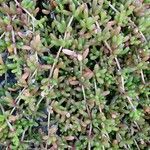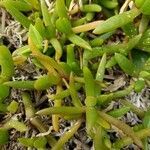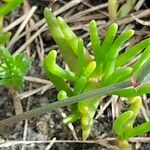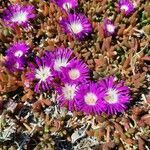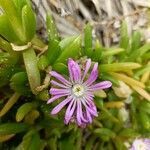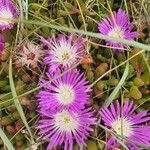Perennial, dwarf shrublet, up to 0.1 m high, stems decumbent forming mats rooting at nodes. Leaves smooth, bluntly 3-angled, apple-green, tinged red when stressed. Flowers solitary or 2-or 3-nate, white to pale or bright pink. Flowering time May-Sept. Capsules pale brown, 5-locular, closing bodies large, bifid.
Mat-forming perennial, rooting at nodes. Leaves 25-35 mm long, trigonous, shortly acuminate, smooth, dark green, with translucent dots. Flowers 1-3, terminal, white to rose-red, 40 mm diam. Fruits 5-locular, pale yellow, sponge-like.
Shrub with prostrate branches. Leaves triquetrous, 5–70 mm long, 1–7 mm wide; keel rounded. Capsule obconical, 4–14 mm long, 5–12 mm wide; pedicels up to 10 cm long.
